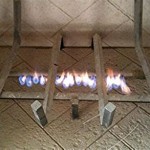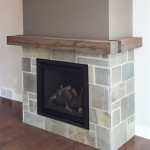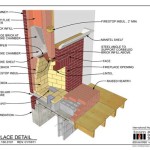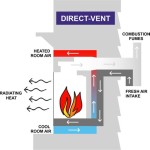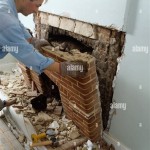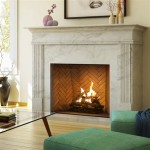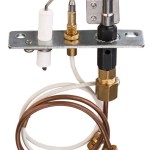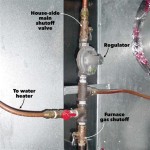Understanding Heatilator Fireplace Mark 123 Parts
The Heatilator Mark 123 fireplace is a popular model known for its durability and heating efficiency. Maintaining this fireplace requires understanding its component parts and their specific functions. This article provides a detailed overview of the key parts associated with the Heatilator Mark 123 fireplace, addressing their purpose and potential maintenance considerations.
Proper identification of these parts is crucial for effective repairs and replacements. Incorrect parts can lead to performance issues, safety hazards, and reduced lifespan of the fireplace. This guide aims to equip homeowners and technicians with the necessary knowledge to accurately identify and manage Heatilator Mark 123 fireplace components.
Key Components of the Firebox
The firebox is the central chamber where combustion occurs. It endures high temperatures and direct exposure to flames, ash, and byproducts of burning fuel. Several key components within the firebox contribute to its function and structural integrity.
Firebricks: These are heat-resistant bricks lining the interior of the firebox. They protect the metal shell from direct heat and help retain warmth, improving heating efficiency. Firebricks are subjected to thermal stress and can crack or crumble over time. Regular inspection is necessary, and damaged firebricks should be replaced promptly to maintain firebox integrity. Different types of firebricks are available, and selecting the correct replacement type is important for optimal performance. The dimensions, composition, and heat resistance rating must match the original specifications of the Heatilator Mark 123.
Baffles: These metal plates or ceramic structures are positioned near the top of the firebox. Their purpose is to redirect hot gases, forcing them to travel a longer path before exiting the chimney. This increases heat transfer to the surrounding room and improves combustion efficiency. Baffles are exposed to high temperatures and corrosive gases, making them susceptible to warping, cracking, or deterioration. Damaged baffles can significantly reduce the fireplace's heating performance and increase creosote buildup in the chimney. Replacement baffles should be specific to the Heatilator Mark 123 model to ensure proper fit and functionality.
Grate: The grate supports the fuel, allowing air to circulate underneath and promote efficient combustion. Grates are typically made of cast iron or steel and must withstand high temperatures and the weight of the fuel. Over time, grates can warp, crack, or burn through, especially if exposed to excessive heat or improper fuel types. Replacing a damaged grate is necessary to ensure proper air circulation and prevent fuel from falling to the bottom of the firebox, which can hinder combustion. The correct grate size and material are crucial for optimal performance and safety.
Andirons: While not always present, andirons are metal supports that elevate the fuel slightly above the grate. This further improves air circulation and combustion. Andirons, similar to grates, are made from durable materials like cast iron or steel to withstand high temperatures. Their lifespan is generally long, but they can be damaged by excessive heat or physical impact. Replacement andirons should be appropriately sized and designed to suit the Heatilator Mark 123 firebox.
Ash Dump Door: Located at the bottom of the firebox, the ash dump door allows for the easy removal of ash. This door is typically made of cast iron or steel and must seal tightly to prevent air leaks. Damage to the ash dump door or its sealing mechanism can result in uncontrolled air intake, leading to inefficient combustion and potential safety hazards. Replacement doors should match the original specifications for a proper seal.
Understanding Ventilation and Chimney Components
The ventilation system, including the chimney, is crucial for safely removing combustion gases from the fireplace. Efficient and properly functioning ventilation is essential to prevent the buildup of dangerous gases like carbon monoxide. Key components of this system must be regularly inspected and maintained.
Smoke Shelf: Located above the firebox opening, the smoke shelf is a horizontal surface that helps prevent downdrafts and promotes upward flow of smoke. It also catches debris falling from the chimney. The smoke shelf can accumulate creosote and debris, which can obstruct airflow and increase the risk of chimney fires. Regular cleaning is necessary to maintain its proper function. Damage to the smoke shelf can negatively impact draft and increase the likelihood of smoke entering the room.
Damper: The damper is a movable plate located in the chimney that controls airflow. When open, it allows combustion gases to escape; when closed, it prevents drafts and heat loss when the fireplace is not in use. Dampers can be made of cast iron or steel and can become warped, rusted, or stuck over time. A malfunctioning damper can lead to inefficient combustion, increased creosote buildup, and drafts. Replacing a damaged damper with the correct size and type is essential for proper fireplace operation and energy efficiency. Top-mounted dampers are also an option and can provide a tighter seal than throat dampers.
Chimney Flue Liner: The flue liner is a protective lining inside the chimney that prevents combustion gases from damaging the chimney structure. It can be made of clay tiles, stainless steel, or cast-in-place concrete. Over time, flue liners can crack, crumble, or deteriorate due to exposure to high temperatures and corrosive gases. A damaged flue liner poses a significant safety hazard, as it can allow combustion gases to leak into the house or ignite combustible materials near the chimney. Regular inspection of the flue liner by a qualified professional is crucial, and any damage should be repaired promptly. Replacing the entire flue liner may be necessary in severe cases.
Chimney Cap: The chimney cap is a protective covering placed at the top of the chimney. It prevents rain, snow, leaves, and animals from entering the chimney. A chimney cap also helps prevent downdrafts and can improve draft. Chimney caps can be made of various materials, including stainless steel, copper, and galvanized steel. Damage to the chimney cap can allow moisture and debris to enter the chimney, leading to corrosion, blockages, and reduced draft. Regular inspection and maintenance of the chimney cap are necessary to ensure its proper function.
Essential Gas and Safety Components (If Applicable)
If the Heatilator Mark 123 is a gas fireplace, it will have additional components related to gas supply and safety. These components are crucial for safe and reliable operation and require specific knowledge and expertise for maintenance and repair.
Gas Valve: The gas valve controls the flow of gas to the burner. It is a critical safety component that must function properly to prevent gas leaks and explosions. Gas valves can be manual or automatic, and they typically have safety shutoff features that stop the gas flow in case of a problem. A malfunctioning gas valve can cause a variety of issues, including inconsistent flame, difficulty starting the fireplace, and gas leaks. Only qualified technicians should handle the repair or replacement of gas valves.
Thermocouple or Thermopile: These devices are safety sensors that detect the presence of a pilot flame. If the pilot flame goes out, the thermocouple or thermopile sends a signal to the gas valve to shut off the gas supply, preventing gas leaks. A faulty thermocouple or thermopile can prevent the pilot flame from staying lit or cause the gas valve to shut off prematurely. Replacing these sensors requires careful attention to detail and proper installation to ensure safety.
Pilot Assembly: The pilot assembly consists of the pilot burner, igniter, and associated components. It is responsible for creating a small flame that ignites the main burner. A malfunctioning pilot assembly can make it difficult to start the fireplace or cause the pilot flame to be unstable. Common issues include clogged pilot orifices, faulty igniters, and loose connections. Cleaning or replacing the pilot assembly components may be necessary to restore proper function.
Burner: The burner is the component that distributes gas and mixes it with air for combustion. Burners can be made of various materials, including cast iron, steel, and ceramic. Over time, burners can become clogged with debris or corroded, leading to uneven flame distribution and reduced heating efficiency. Cleaning or replacing the burner may be necessary to restore optimal performance. The burner design is specific to the Heatilator Mark 123, ensuring proper air and gas mixture.
Flame Sensor: Some models may include a flame sensor that monitors the presence of a flame during operation. If the flame is extinguished unexpectedly, the flame sensor will shut off the gas supply. This is an added safety feature to prevent gas leaks. A faulty flame sensor can cause the fireplace to shut off prematurely or fail to start. Diagnosis and replacement of the flame sensor require specialized tools and expertise.
Maintaining a Heatilator Mark 123 fireplace requires a thorough understanding of its component parts. Regular inspection and timely replacement of worn or damaged parts are crucial for safe and efficient operation. When performing maintenance or repairs, it's always best to consult the owner's manual and seek assistance from a qualified technician if needed. Neglecting maintenance can lead to safety hazards, reduced performance, and costly repairs in the long run.

Update Your Heatilator Mark 123 Fireplace In No Time

3336r Mark 123 Woodburning Fireplace Heatilatorparts Com
Heatilator Mark 123 3138 Problems Hearth Com Forums Home

Update Your Heatilator Mark 123 Fireplace In No Time
Heatilator Mark 123 3138 Problems Hearth Com Forums Home
Options To Renovate Surround Of Heatilator Mark 123 Hearth Com Forums Home
Options To Renovate Surround Of Heatilator Mark 123 Hearth Com Forums Home
Heatilator Mark 123 3138 Problems Hearth Com Forums Home
Heatilator Mark 123 3138 Problems Hearth Com Forums Home
Heatilator 123 Augustinewilcox S Blog
Related Posts

